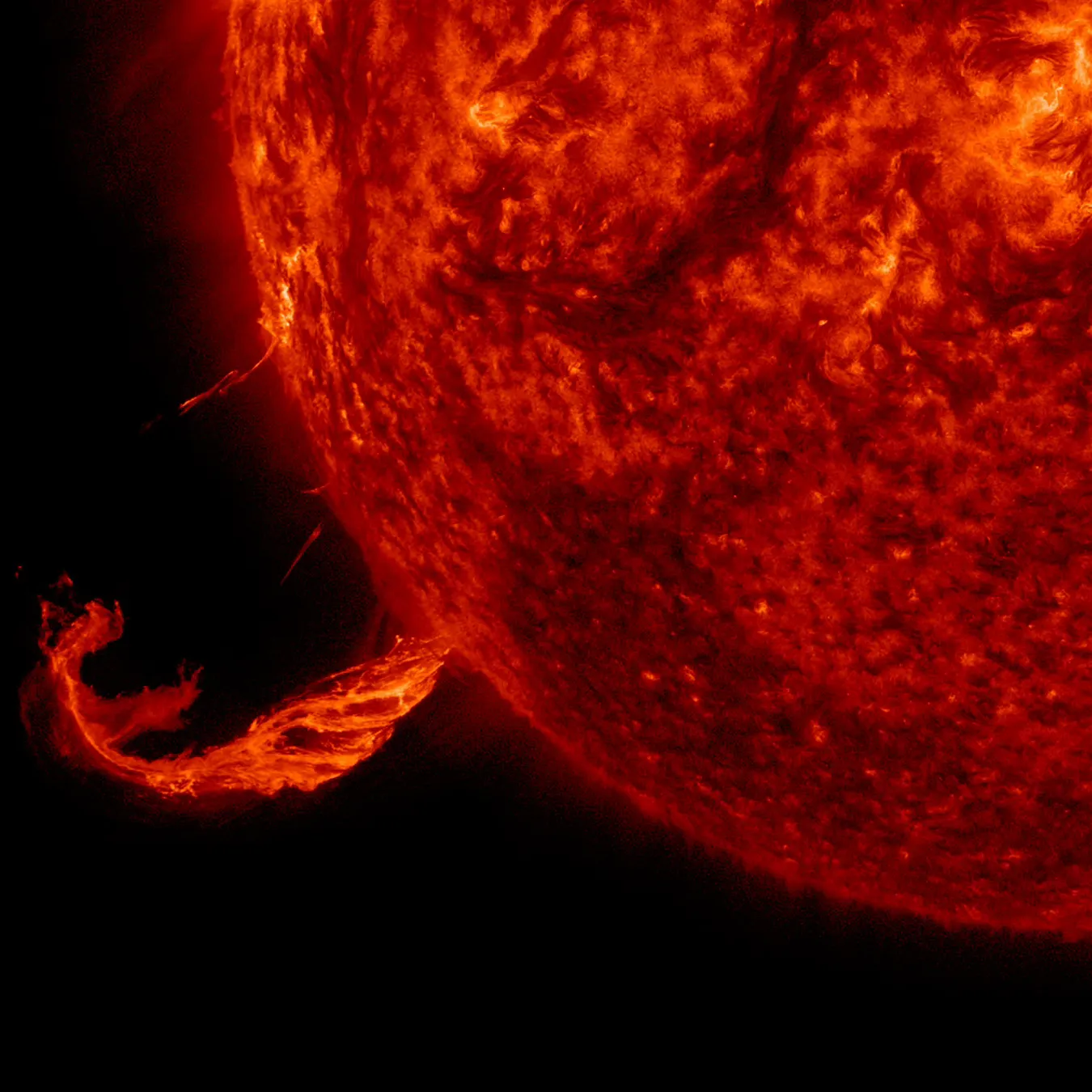Sunspots: Dark Patches on the Sun That Are Cooler Than You Think

Sunspots look dark, but they hold the key to understanding the Sun’s magnetic secrets and space weather impacts on Earth.
When we imagine the Sun, we think of an intensely hot, blazing sphere. On average, its surface temperature is about 5,500°C (10,000°F). But surprisingly, certain regions called sunspots are much cooler, with temperatures ranging from 3,500°C to 4,500°C (6,300°F to 8,100°F). They appear darker not because they are cold in absolute terms, but because they are cooler compared to the surrounding bright surface, making them stand out as dark patches.
It’s like comparing a glowing yellow bulb to a bright white one—the yellow looks dimmer, even though it’s still shining.
Key Facts About Sunspots
- Size Beyond Imagination:
Sunspots vary in size from 1,000 km to 50,000 km in diameter. For scale, Earth’s diameter is about 12,742 km, meaning our planet could easily fit inside a single average sunspot. The largest recorded sunspot, AR 2192, was a staggering 129,000 km wide—over ten times larger than Earth. - They Move Slowly Across the Sun:
Sunspots rotate with the Sun but at different speeds. At the equator, the Sun takes about 27 days to complete one rotation, while near the poles, it takes about 33 days. This uneven speed twists magnetic fields, leading to solar activity. - Life Cycle:
A sunspot may last only a few hours or survive for up to 2–3 months, constantly changing shape and structure. - The Maunder Minimum Mystery:
Between 1645 and 1715, almost no sunspots were observed, a 70-year period called the Maunder Minimum. This unusual quiet phase of the Sun coincided with the “Little Ice Age” on Earth, when global temperatures dropped noticeably. - Explosive Power – Solar Flares and Storms:
When a sunspot destabilizes, it can trigger solar flares or coronal mass ejections (CMEs), releasing energy equal to an entire year of U.S. electricity consumption in just a few seconds. These storms can disrupt satellites, GPS, power grids, and even cause spectacular auroras on Earth. - Historical Observations:
Early European artists (15th–17th centuries) often painted the Sun but omitted sunspots, thinking they were imperfections. Galileo was among the first to scientifically observe and record sunspots as natural solar phenomena. - Magnetic Beasts:
Sunspot magnetic fields are about 5,000 times stronger than Earth’s, disrupting plasma flows and lowering surface temperature—this is why they appear as darker regions.
Can We See Them?
Yes—but never with the naked eye. Viewing the Sun directly can cause permanent eye damage. Scientists and enthusiasts use special solar filters or telescopes to safely observe sunspots, and today space observatories like SOHO and Solar Dynamics Observatory (SDO) monitor them daily.
Why They Matter
Sunspots are more than just dark patches. They’re windows into the Sun’s magnetic heart and the drivers of space weather that affect Earth’s technology and climate. Understanding them helps us prepare for solar storms that could impact modern life, from satellites to power grids.



Nicely Done…!!!
Damn the title is fire!
Loved reading this one!
Yo, is anyone else having issues with the jljl55login? Just trying to get my daily bonus, haha! Let’s share the experiences, guys.
Been using Dafbat for a bit now, and it’s pretty solid! The interface is clean, and it’s easy to navigate. Definitely makes placing bets a breeze. Give it a whirl: dafbat
Downloaded the 9betapp last week, and it’s been smooth sailing. The interface is clean, and it’s pretty responsive. Definitely an upgrade over the website, in my opinion. Download it here: 9betapp
Just stumbled upon cpc6, seems promising! Still exploring, but the initial impression is decent. I’ll update if I find anything groundbreaking. Go see for yourself: cpc6
Betbuslogin was a breeze! Quick and easy to sign in. The site itself is pretty functional too. Here’s the link: betbuslogin